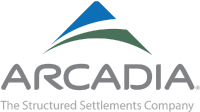The Achieving a Better Life Experience Act of 2014 (the “ABLE Act”) was signed into law by President Obama in December of 2014 and provides individuals with special needs and disabilities to own tax-free savings accounts while preserving their needs-based government benefits. Its purpose is to encourage and assist individuals and families in saving private funds to support individuals with disabilities to maintain health, independence, and quality of life while providing secure funding for disability-related expenses of beneficiaries with disabilities that will supplement, but not supplant, benefits provided through private insurance, title XVI (Supplemental Security Income) and title XIX (Medicaid) of the Social Security Act, the beneficiary’s employment, and other sources. It amended Section 529 of the Internal Revenue Code to create tax-free savings accounts for individuals who were disabled prior to the age of 26 and can be an invaluable settlement planning tool. An ABLE Account has tremendous flexibility and the funds can be used on any “qualified disability expense,” which is defined as any expense related to the beneficiary as a result of living a life with a disability, including education, housing, transportation, employment training and support, assistive technology and personal support services, health, prevention and wellness, financial management and administrative services, legal fees, expenses for oversight and monitoring, funeral and burial expenses, and other expenses, which are approved by the Secretary under regulations.
ABLE Accounts have a maximum amount based on the state 529 limit and have an annual contribution limit, which make structured settlements an ideal funding vehicle for them, provided they do not count against an individual’s Medicaid eligibility. ABLE Accounts are still new mechanisms and we still have little in the way of operational guidance from CMS. While structured settlements are not mentioned in the regulations, CMS has issued a letter to the State Medicaid Directors on funding that provides “third party contributions are contributions made by persons other than the designated beneficiary. Further, third party contributions are made with funds that do not otherwise belong, or are not otherwise due, to the designated beneficiary; that is, they are made with the third party’s funds. Accordingly, an ABLE contribution by a person other than the designated beneficiary is treated as a completed gift.” Similarly, Social Security has issued guidance in their POMS (Program Operation Manual System) that states the same. Whether structured settlements are considered third party contributions should be determined by the parties and by state Medicaid.
For greater clarity, parties should consider having the structured settlement fund a Special Needs Trust (“SNT”), which in turn would “pour over” or fund the ABLE Account. The POMS clearly define SNT’s as being third party contributions, stating “a transfer of funds from a trust, of which the designated beneficiary is the beneficiary and which is not considered a resource to him or her, to the designated beneficiary’s ABLE account generally will be considered a third party contribution for ABLE purposes because the contribution is made by a person or entity other than the designated beneficiary (namely, the trustee) and because the designated beneficiary does not legally own the trust. You may seek guidance from your regional trust lead if you have questions regarding the trust transfer to an ABLE account.”
Consider partnering with a trusted SNT provider for structuring funds into an ABLE Account to provide the most effective funding vehicle and giving disabled or special needs individuals the best quality of life.


